Reason: Could Not Find a Login Matching the Name Provided Updated FREE
Reason: Could Not Find a Login Matching the Name Provided
XAMPP is a fantastic costless tool for creating a local WordPress installation. You lot tin utilise it to perform tests and effort out new ideas or updates earlier taking them to your live site. Withal, similar whatsoever software solution, errors may occasionally come up, such as the confusing "Server certificate does NOT include an ID which matches the server name" message.
This sneaky fault message pops up in the XAMPP fault log from time to fourth dimension, often when you are troubleshooting other issues. While it doesn't cause any issues on its own, it might indicate a deeper issue that could eventually grow into something more than serious, and then fixing it is of import.
In this commodity, nosotros'll explain this mistake in more item. Then nosotros'll walk yous through how to set up information technology in iii uncomplicated steps. Let's dive in!
An Introduction to the "Server Document Does NOT Include an ID Which Matches the Server Proper name" Warning in XAMPP
The elusive "Server certificate does NOT include an ID which matches the server proper name" error message doesn't announced on the front end of a site. Instead, yous tin find it in the XAMPP error logs:

Typically, what happens is that some other issue brings you to the error log, and then yous'll notice the server certificate warning accidentally. The initial problem could involve crashing XAMPP components (usually Apache) or MySQL errors. You cheque the XAMPP logs for clues about this trouble and find the "Server Certificate Does Not Include an ID Which Matches the Server Name" message, often multiple times.
It's important to note that this notification is most likely not related to whatever initial issue that brought you to the fault logs. In fact, it's more of a warning than an actual error. Your site can still operate normally.
With that beingness said, warnings still aren't ideal considering they indicate that something is wrong with your installation. Correcting this result tin help your local XAMPP environment run as smoothly as possible and prevent future problems.
The "Server certificate does NOT include an ID which matches the server name" message indicates an error with the Secure Sockets Layer (SSL) configuration for your Apache installation (Apache is office of XAMPP). Fortunately, resolving it is surprisingly easy—much more than and so than some other XAMPP errors. It'southward equally unproblematic every bit editing a unmarried line in the Apache files.
How to Fix the "Server Document Does Non Include an ID Which Matches the Server Name" Issue (In 3 Steps)
At present that you sympathize more near this mistake message, it's time to go to piece of work on fixing information technology. The process involves editing a configuration file.
Step 1: Open up the xampp/apache/conf/extra Directory
The first pace is to open the correct Apache directory in a file browser. The well-nigh straightforward way to exercise this is to launch the XAMPP Control Panel from your system tray, and so click on Explorer on the correct side of the window:
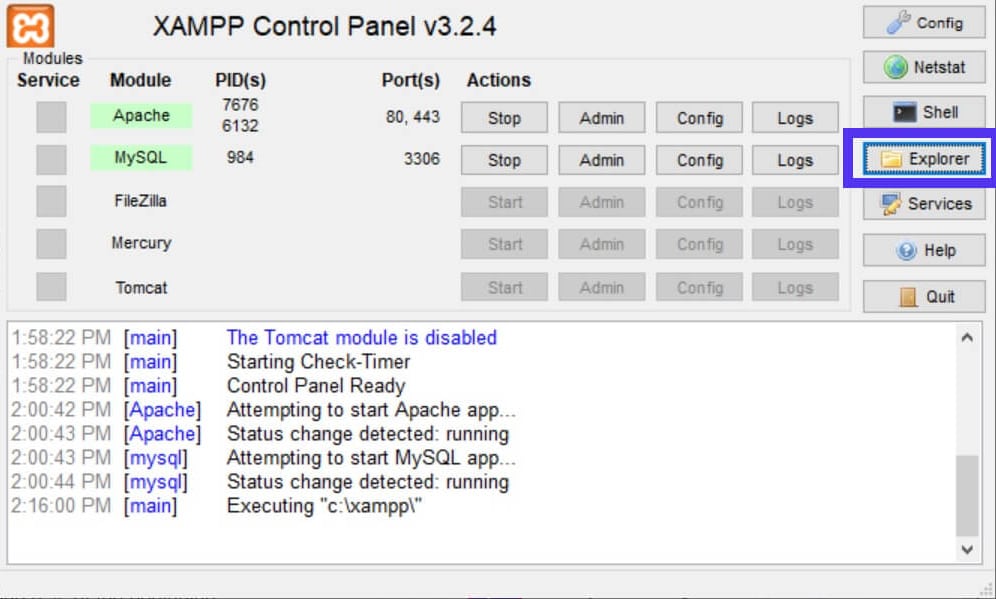
This volition open a file browser window in the XAMPP folder:
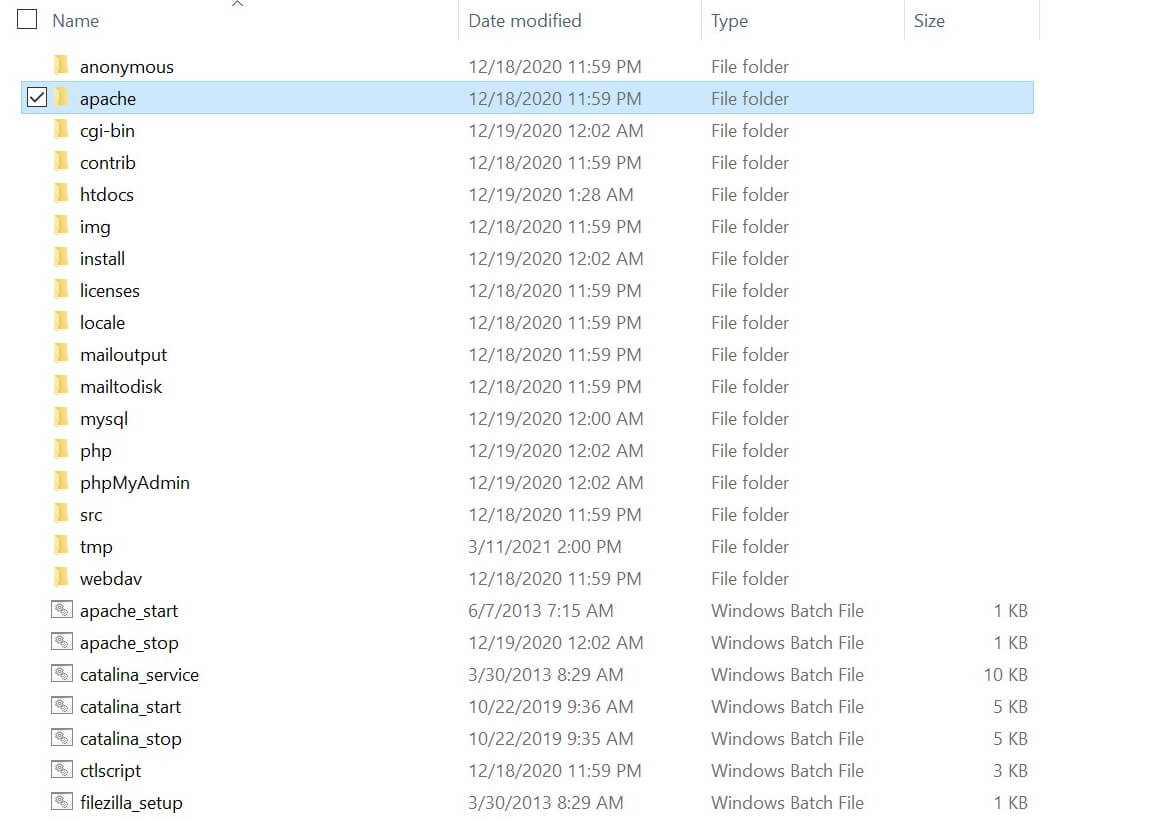
From hither, you can navigate to apache > conf > extra. The full directory path is xampp/apache/conf/actress. One time in that location, you lot can proceed to the next pace: opening and editing a key Apache file.
Step 2: Edit the httpd-ssl.conf File
Inside the xampp/apache/conf/actress folder, the file you're looking for is called httpd-ssl.conf:
Subscribe Now
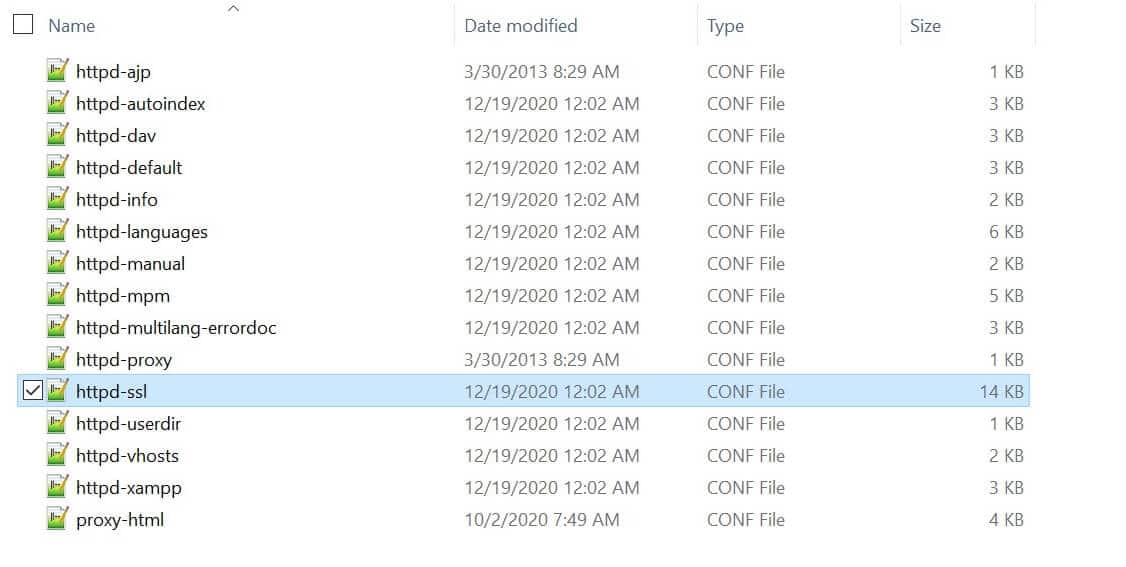
This file deals with the SSL configuration for your XAMPP Apache installation. Once you've located it, go alee and open up it in a text editor. If y'all're on a Mac, the default TextEdit works just fine. On Windows, we recommend using Notepad++:
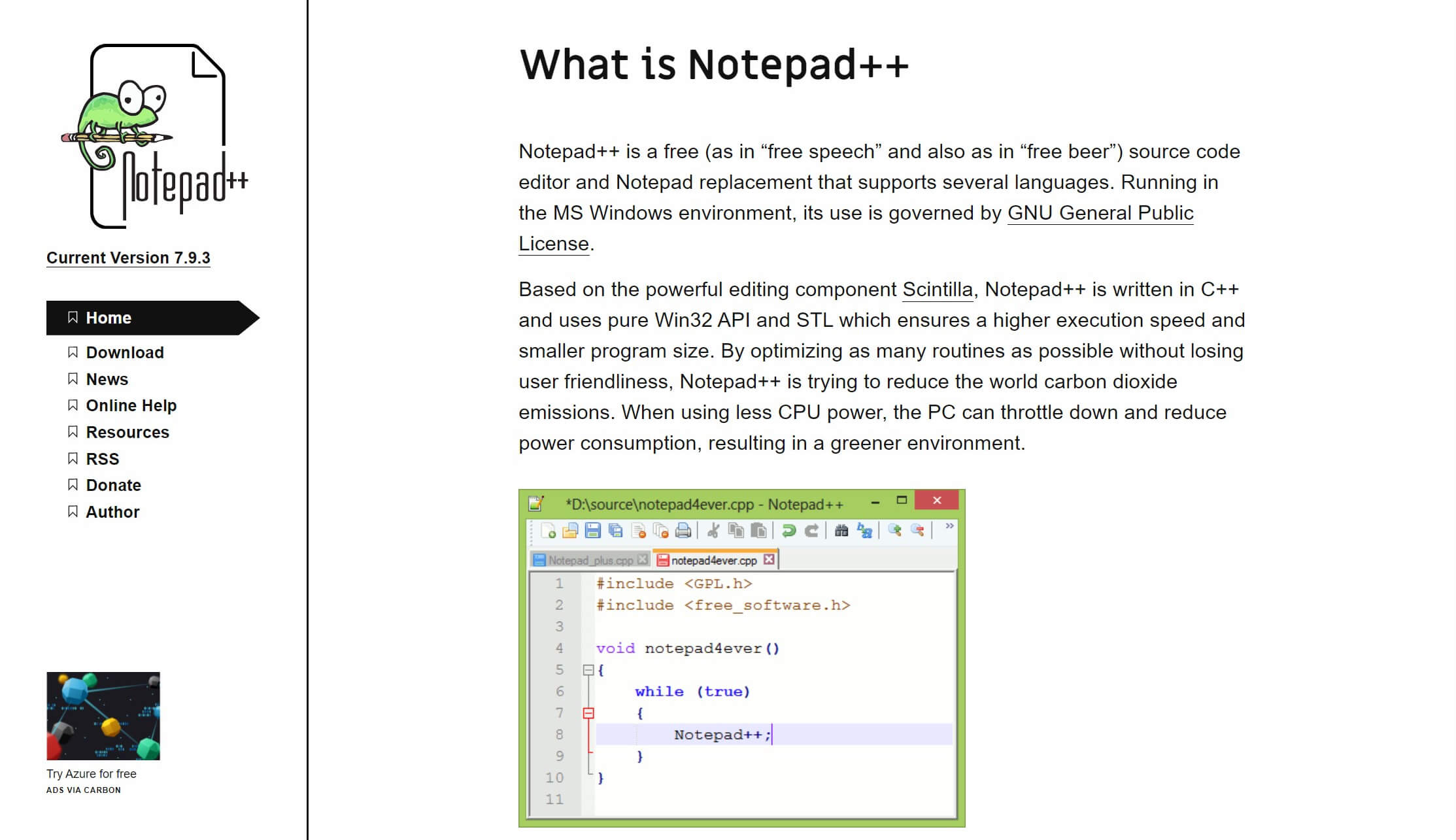
With the file open, look for the line that reads "ServerName www.example.com:443". Information technology should be located nether the "General setup for the virtual host" section (line 125 by default):

When yous find this line, add a "#" at the front of information technology. This is known as "commenting out", and information technology tells the software to ignore that line when reading the file.
Next, you can add the text "ServerName localhost" on the line directly below it:

Once yous're done, you can save the file and close the text editor. Then go on to the adjacent step.
Step iii: Restart Apache
With the httpd-ssl.conf file edited and saved, the concluding step is to restart Apache. To do so, head back to the XAMPP Control Panel and click on the Finish button next to Apache:
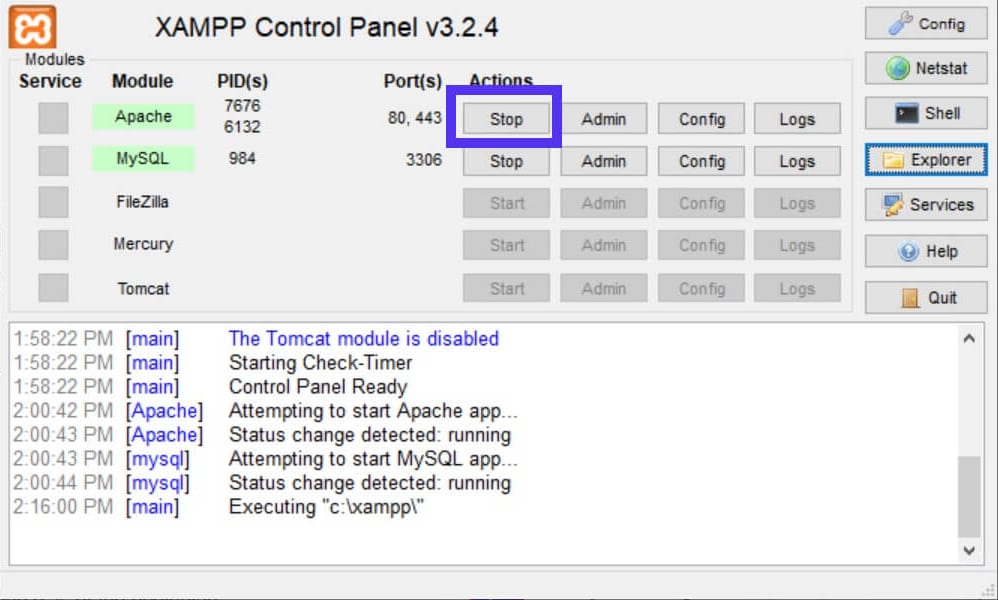
Requite the program a moment to finish the performance. Then go ahead and click on Outset to restart the module:

That's information technology! At this bespeak, the fault should be resolved. You tin go back to enjoying your XAMPP installation and getting piece of work washed.
However, if you want to verify that the effect is in fact resolved, you can navigate back into the error log once Apache has restarted. To access the log, open up the XAMPP Command Panel and click on Logs:

In the pop-up menu, select Apache (fault.log). This will open up the log file in a text editor:

The log is in chronological social club. Y'all can curlicue to the lesser to see the most recent entries, and check to see if any new occurrences of the error accept appeared since you changed the file.
Summary
Error messages are never fun—and when they occur in a testing environment, they can exist even more frustrating. Afterward all, it'south hard to test exciting new website features when your installation is misbehaving.
Fortunately, the "Server certificate does NOT include an ID which matches the server name" issue is fairly benign and easily stock-still. All it takes is a quick edit to a single file, httpd-ssl.conf, and you should be dorsum to an fault-free log.
If you want to ensure that your alive sites run equally smoothly as your XAMPP installation, consider hosting with Kinsta. Whether you're starting a new blog or growing your business, we've got a plan that can help!
Save time, costs and maximize site performance with:
- Instant help from WordPress hosting experts, 24/7.
- Cloudflare Enterprise integration.
- Global audience reach with 29 data centers worldwide.
- Optimization with our congenital-in Application Operation Monitoring.
All of that and much more, in one program with no long-term contracts, assisted migrations, and a 30-mean solar day-money-back-guarantee. Check out our plans or talk to sales to find the program that's right for you.
Reason: Could Not Find a Login Matching the Name Provided
DOWNLOAD HERE
Source: https://kinsta.com/knowledgebase/xampp-server-certificate-does-not-include-an-id-which-matches-the-server-name/
Posted by: venturaandithers.blogspot.com

0 Response to "Reason: Could Not Find a Login Matching the Name Provided Updated FREE"
Post a Comment